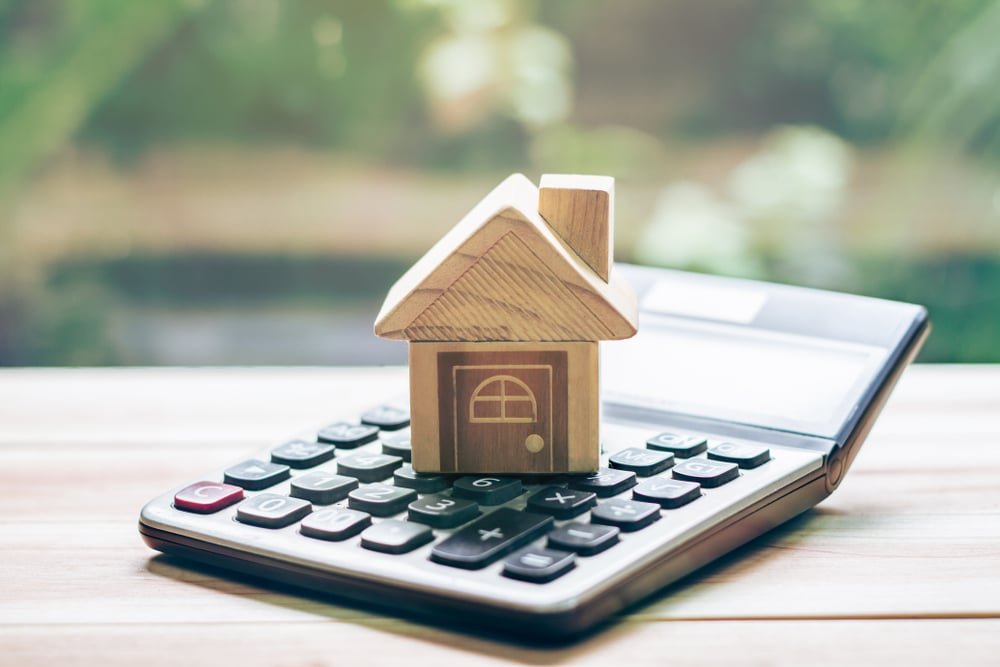Mortgaged and other owner-occupier households had the highest inflation rate in the year to June, at 3.7%, Government data has shown.
Household Costs Index (HCI) figures from the Office for National Statistics (ONS) suggested this reflected the rise in mortgage interest payments. However, this was lower than an inflation rate of 4.1% in May and 11.1% in June last year.
The impact of higher mortgage payments was also evident in the fact that people who own their homes outright had the lowest inflation rate, at 1.3%, the ONS data showed.
Housing and household services were the main contributors to the rise in costs, as mortgage interest payments accounted for 2% of the annual rate for mortgaged households.
Private renters had a higher inflation rate than social and other renters, at 3.2% compared to 1.9%, with private rental costs contributing 2.2% to the annual inflation rate for these tenants. This saw the gap in the inflation rate for mortgaged households and private renters narrow to 0.5%.
For all tenure types, UK household costs increased by 2.5% during the period. This was lower than the 4.5% annual rate recorded in March.
This reduction was primarily due to a drop in electricity, gas and other fuel prices, along with slower growth in the cost of food and non-alcoholic beverages, and miscellaneous goods and services.
This lowered the overall HCI inflation rate by 0.67%, 0.33% and 0.33% respectively between March and June this year.
‘Stubborn’ rates and ‘runaway’ rents impacting households
Sarah Coles, head of personal finance at Hargreaves Lansdown, said: “Stubborn mortgage rates and runaway rents are clobbering working families. Lurking underneath the headline figures of easing inflation is mortgage misery and ruinous rent hikes that mean some households face inflation rates as high as 3.7%.
“The overall figure looks increasingly positive, with the Household Costs Index rising just 2.5% in the past 12 months. It’s a significant easing from 4.5% in March, and a world away from 9.8% a year earlier.”
Coles said the impact of higher rates was “feeding through into people’s pockets, as more of them remortgage”.
“The picture is bleak. Those with mortgages face a far higher inflation rate than those without. And those with bigger mortgages are suffering even more horrible jumps in monthly payments, which is why higher earners and parents face horrible price inflation,” she added.
Coles continued: “Renters don’t escape the pain, because soaring rents stretched renters horribly – and because they tend to be on lower incomes, those rents absorb a disproportionally large portion of their income, so the impact is felt even more keenly. In many cases, their finances were already on a knife edge, so inflation of 3.2% will be particularly painful.”
High-income households experiencing higher inflation
High-income households saw higher rates of inflation because they spent more on mortgage interest payments, at a difference of 0.83% when compared to low-income households.
Low-income households saw their inflation rate slow due to declining gas, electricity and other fuel prices. This resulted in a 1.01% differential in the inflation rate for high- and low-income households.
Overall, high-income households had an inflation rate of 3.3%, while this was 1.7% for low-income households.
The data showed that households that spent a greater proportion of their basket on mortgage interest payments had a higher inflation rate than those who spent a larger proportion on energy bills.
Due to this, higher inflation was experienced by non-retired households and households with children, which recorded rates of 2.9% in the year to June.
Retired households had an HCI inflation rate of 1.2%, while households without children saw costs go up by 2.3%.
Coles said the situation was “better” for pensioners as they had a lower inflation rate.
She added: “This comes down to how retirees typically spend their income. They’re more likely to either own their home outright – so they don’t face higher mortgage costs – or they might live in social rental property, which has seen [a] lower rate of inflation than private rent. At the same time, they spend a disproportionate amount of their income on bills, so they benefitted particularly from the cut in the energy price cap in April.
“At the same time, they saw their state pension rise 8.5%, thanks to the triple lock, which meant for many pensioners, the cost-of-living crisis has eased fairly significantly since the peak a year earlier.
“Of course, this is the calm before the storm this winter, when rising fuel bills and the cuts to the Winter Fuel Payment will mean bills dominate pensioner spending to an even more alarming degree, forcing many to cut their energy use, which risks serious health implications.”
This article was first published on YourMoney.com‘s sister site, Mortgage Solutions. Read: Inflation rate highest for mortgaged households – ONS

